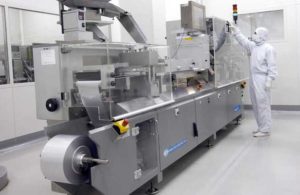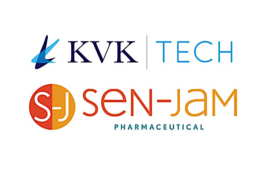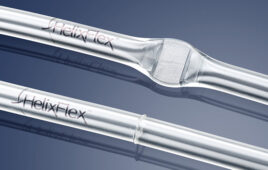
Image courtesy of Wikipedia
The pharma industry has been relatively slow to embrace concepts such as Industry 4.0, but COVID-19 is serving as a catalyst for sweeping changes within the industry.
The philosophy has roots in a German framework that prioritizes digitization to drive manufacturing efficiency, promising that cyber-physical systems will usher in the next industrial revolution. The Industry 4.0 framework spans connectivity, analytics and AI and integrated automation technologies.
But the deployment of Industry 4.0–inspired technologies has been uneven in the pharma industry. “The industry is pretty cautious,” said John Younes, COO of Litmus Automation, the developer of an industrial edge computing platform.
One of the reasons for the lag, apart from the industry’s regulated nature, is the combination of high profit margins and manufacturing complexity. “In automotive, every second you shave off the cycle time on a subassembly is more money in your pocket,” said Damian Smektala, director of sales at Litmus Automation.
But highly regulated industries tend to be more risk averse. “In pharma, the moment you put in a new system that can make any sort of relevant decisions, you need to start spending a lot of time and money on validation and qualification,” Smektala said.
[Related: Pharma 4.0: Industry 4.0 Applied to Pharmaceutical Manufacturing]
While there are few companies with mature Pharma 4.0 programs, the benefits of digitization are growing more obvious. Pharma companies using Industry. 4.0 tools can cut manufacturing costs by up to 40% while improving quality, according to research from Bain & Company.
The pandemic should compel pharma companies to rethink their operations and bolster resilience, according to McKinsey. Digital tools, for instance, can help pharma companies mitigate risk in their supply chains.
Digitally-enabled printers, for instance, can ensure accurate expiration date printing on over-the-counter drug packaging while also monitoring printer health, according to Videojet Technologies, which is marketing its new Videojet 1880 continuous inkjet printer as an Industry 4.0 technology.
But as the pandemic continues to catalyze change, one risk is that Industry 4.0 and related concepts such as smart factories compete with other transformative trends.
Interest in other digital technologies such as remote patient monitoring in clinical trials, electronic health records and precision medicine have become priorities for a majority of pharmaceutical companies, according to GlobalData’s “The State of the Biopharmaceutical Industry” report.
The pandemic itself has also forced pharma companies to grapple with evolving in-person FDA inspections of pharmaceutical facilities. It’s forced manufacturers in general to increase their focus on decontamination and sterilization, according to Kathleen Burzycki, senior global marketing director, life sciences at Ecolab. “When the pandemic came, one of the areas that was key for pharmaceutical and personal care manufacturers was ensuring that they could keep their environments sterile and safe,” Burzycki said.
But ultimately, the promise of Industry 4.0 to bolster manufacturing efficiency could be particularly alluring for an industry that spends double-digit percentages in R&D. Other factors boding well for the adoption of digital technology include the expanding digital functionality of modern manufacturing equipment and the rise of next-gen wireless networking technologies such as Wi-Fi 6 and 5G.
In the meantime, pharma companies should keep an eye on other industries that are Industry 4.0 trailblazers — especially those with core processes that are broadly similar. One example is the food-and-beverage industry, which has invested in smart factory technology to protect workers and ramp up production during the pandemic. The pharma industry has much in common with the food and beverage sector, Smektala said. “It’s just more expensive and there are more regulations,” he concluded.





Tell Us What You Think!